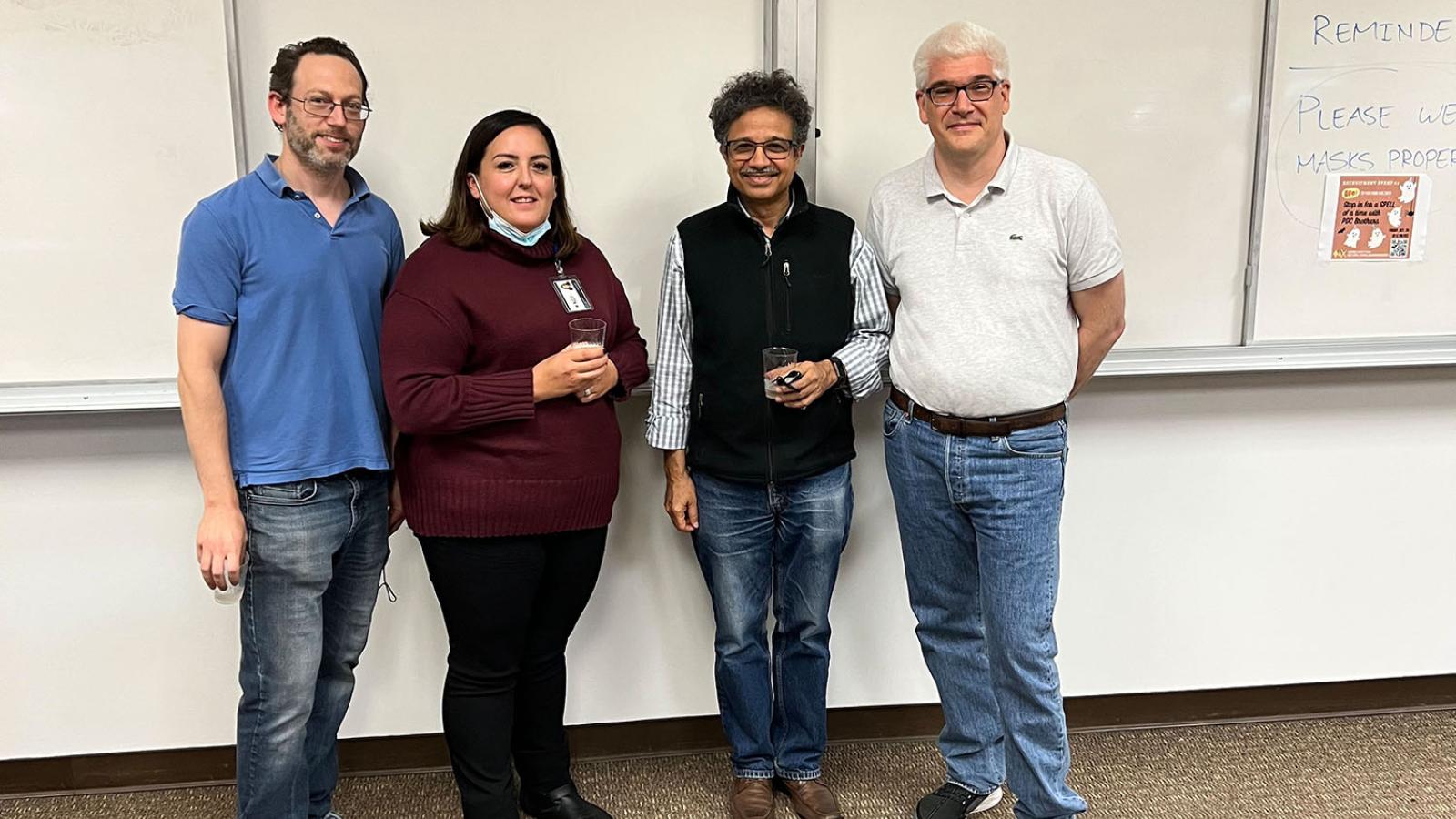As the world continues to grapple with the COVID-19 pandemic, Pomona College Chemistry Professor Matthew Sazinsky is part of a team of scientists searching for ways to stop future pandemics.
Sazinsky, a protein biochemist, Professors Animesh Ray and Jeniffer Hernandez of Keck Graduate Institute (KGI) and Stefano Lonardi of the University of California, Riverside, recently received the 2021 National Institute of Health (NIH) Director’s Transformative Research Award. The three-year grant of $1.8 million will support the team’s research.
The group is developing a computer assessment procedure to predict the structure of antibodies that could neutralize a previously unknown antigen or a novel virus that might emerge in the future. This process could help with vaccine development and have a lasting impact on medicine in general, potentially leading to the development of new treatments for cancer, allergies and hypersensitivity issues.
In an emerging viral pandemic, it would be feasible to move from the identification of a viral or bacterial antigen to the generation of an antibody or artificially scaffolded synthetic antibody within a very short time, thus potentially saving lives and avoiding catastrophic economic damage, Professor Matthew Sazinsky says.
Among Sazinsky’s areas of expertise is applying biophysical methods to the study of protein structure. His lab, which will include Pomona College students, will focus on the study of structural and biochemical components of the project. Students will have opportunities to be research assistants during the academic year and summer.
“What comes out of the calculations is only as good as the information going in. On the input side of the machine learning process, we’ll help generate high quality data sets and define parameters to train the program. On the output side, we’ll be very involved in validating the predictions through biochemical and structural work. Students will have ample opportunity to participate in either of these areas,” Sazinsky says.
This multi-year project builds upon research Ray has been conducting for the last 13 years. Sazinsky says that before the pandemic, this project wouldn’t have been on his radar. But when students were sent home in spring 2020 due to efforts to control the spread of the virus, Ray reached out to Sazinsky to get his opinion as a biochemist.
“Animesh asked me about the structure of the COVID-19 spike protein. My lab was shut down, the project seemed interesting, and honestly, I needed something to think about besides online learning. Somehow this led to me designing stable epitopes (protein fragments) of the spike protein. Eventually, this snowballed into a grant that I’m lucky to be a part of,” Sazinsky says.
This work is a new area of research for Sazinsky and is unlike anything he has done before. He looks forward to the boundless possibilities this research could present.
